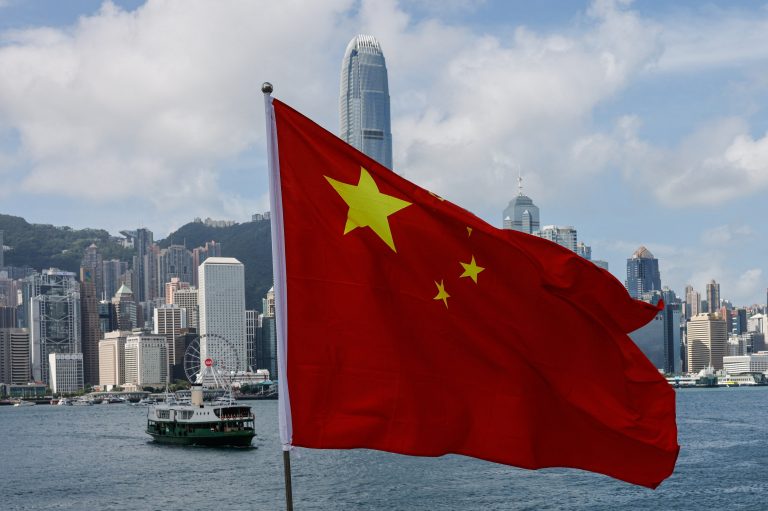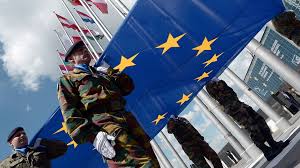
Russia-Ukraine War: Zelensky Rushes to Munich for Critical Talks
The Russia-Ukraine conflict, which erupted into full-scale warfare in February 2022, has continued to dominate global headlines and reshape geopolitical landscapes well into 2023 and beyond. The conflict is multifaceted, complex, and—above all—rapidly evolving. In the most recent chapter of this protracted confrontation, Ukrainian President Volodymyr Zelensky has hurried to attend the Munich Security Conference. In this high-stakes meeting, he hopes to secure much-needed international support—particularly from the United States—against a backdrop of growing uncertainty.
Key developments, such as intensifying Russian military offensives across Eastern and Northeastern Ukraine, highlight the urgency of his mission. At the same time, shifting political winds in Washington, D.C., signalled by the emergence of a new presidential administration under Donald Trump—according to the scenario presented—have introduced further ambiguities. His previous statements questioning American involvement in foreign conflicts cast doubt on the continuity of military assistance that has thus far been crucial for Ukraine’s resilience.
Background: The Russian Offensive Intensifies
1. A Shifting Battleground
According to a Reuters report published in late 2023, Russia has stepped up its drone and missile attacks on key Ukrainian cities, including the north-eastern city of Sumy (known in Ukrainian as Sumy), and the capital, Kyiv. These strikes have targeted both military and civilian infrastructure, intensifying the humanitarian crisis and increasing international condemnation. Videos released by local Ukrainian emergency services reveal the grim aftermath of these assaults: burnt-out vehicles, damaged homes, and civilians caught off-guard in the early hours of the morning.
2. Frontline Pressures
Key strategic points like the Donbas region remain fiercely contested. The Institute for the Study of War (ISW), in one of its situation updates, confirmed that Russian forces have shifted more battalion tactical groups toward the front lines around Bakhmut, Sievierodonetsk, and Lyman to escalate pressure on Ukrainian defences. Meanwhile, the Russian Defence Ministry has circulated footage showcasing urban combat in areas near Kreminna and Lysychansk, indicating an increased willingness to engage in close-quarters confrontation—a move that often results in higher casualty rates on both sides.
3. Casualties and Humanitarian Toll
Although precise casualty numbers are difficult to verify—partly due to the fog of war—various international organisations, including the Office of the United Nations High Commissioner for Human Rights (OHCHR), estimate that tens of thousands have been killed or wounded since the start of the full-scale invasion. Civilian infrastructure continues to be systematically targeted, displacing millions and requiring large-scale international humanitarian assistance. The World Health Organisation reports that at least 700 healthcare facilities have been attacked or damaged since the beginning of the conflict, severely limiting access to medical services in frontline areas.
The Political Context: Trump’s Administration and Questions of Continued US Support
1. Historical US Assistance
Since the start of the full-scale invasion in 2022, the United States has been one of the largest foreign supporters of Ukraine’s defensive efforts. US aid packages, consisting of military hardware, humanitarian aid, and financial support, have cumulatively reached tens of billions of dollars. These packages have included advanced weapons systems such as the High Mobility Artillery Rocket System (HIMARS), Javelin anti-tank missiles, and Patriot missile defence units—all of which have significantly bolstered Ukraine’s defensive capabilities.
2. Shifting American Priorities
However, statements attributed to President Donald Trump—in the scenario presented—have raised concerns regarding Washington’s ongoing commitment. Trump has previously questioned America’s global military engagements, emphasising an “America First” approach. If his administration follows through, it could mean a substantial recalibration of foreign policy priorities—leaving Ukraine to seek alternative backers or compelling European allies to fill the gap. News outlets like The Guardian have also noted the polarised domestic debate within the United States, wherein certain members of Congress are urging a more stringent oversight of funds, reflecting broader caution about “forever wars.”
3. Implications for Ukraine
The immediate fear among Ukrainian officials, and indeed among European allies, is that diminishing US support would tip the balance on the battlefield in Russia’s favour. European NATO members—including Poland, the Baltic States, and the United Kingdom—have been ramping up their assistance, but American support remains a linchpin due to both the quantity and sophistication of the equipment provided.
Zelensky’s Urgent Mission to Munich
1. Securing International Backing
President Zelensky’s appearance at the Munich Security Conference is a strategic and symbolic move. He aims to consolidate Western backing at a critical juncture. According to BBC News, Zelensky is slated to meet with various high-level officials, including US Vice President J.D. Vance, Secretary of State Marco Ruil, and Presidential Envoy Keith Kellogg, among other hypothetical representatives. His objective is to reassure them that investing in Ukraine’s defence is crucial not merely for Ukraine’s sovereignty but for the stability of Europe and, by extension, the global order.
2. Potential Talking Points
○ Reaffirming Shared Values: Zelensky will likely stress the shared democratic values that unite Ukraine and its Western partners, highlighting the moral imperative to stand against aggression.
○ Financial and Military Guarantees: With the uncertain US posture, the Ukrainian president may request new security guarantees—either bilateral or multilateral—that extend beyond the immediate timeline of the war.
○ Humanitarian Angle: Presenting updated data on civilian casualties, refugee flows, and critical infrastructure damage may help galvanise humanitarian and reconstruction support from other European states.
3. European Allies in Focus
The conference also offers Zelensky a forum to push for enhanced European engagement. Thus far, Germany, France, and the United Kingdom have been active in providing aid and weaponry, albeit in smaller amounts compared to the US. Strengthening alliances with these European nations could prove pivotal if Washington’s support wanes or shifts significantly.
Russia’s Perspective and Demands
● Diplomatic Stalemate
Despite the intense fighting on the ground, the Kremlin has reiterated its willingness to negotiate—but only on its own terms. Russian Foreign Minister Sergei Lavrov has repeatedly stated, in line with official statements from the Russian government, that any peace agreement must acknowledge “realities on the ground,” including Russia’s claim to territories it has forcibly annexed. This position has been categorically rejected by Ukraine and not recognised by most of the international community.
● Escalation Tactics
According to reports from TASS, a Russian state-controlled news agency, the Russian Defence Ministry asserts that further offensives will continue if Ukraine refuses to “meet Moscow’s security needs.” Such statements frequently accompany calls for demilitarisation of certain areas, as well as legally binding promises that Ukraine will not join NATO. From Moscow’s viewpoint, these demands represent non-negotiable security imperatives.
● Domestic Russian Sentiment
Within Russia, state media channels continue to portray the conflict as a defensive measure against alleged Western encroachment. Independent polls from organisations like the Levada Centre indicate mixed domestic support for the war, with some Russians backing the Kremlin’s narrative but others expressing scepticism or outright dissent. Despite cracks in popular backing, the government has shown no sign of relenting in its military pursuits.
The Broader European Security Architecture
1. NATO and the European Union
European nations remain on high alert, especially countries sharing borders with Russia or Belarus. NATO’s eastern flank has been reinforced with additional multinational battlegroups, and countries such as Poland and Lithuania have welcomed more permanent US troop deployments—actions intended to deter any spillover of the conflict.
2. Energy and Economic Considerations
The protracted war has also underscored Europe’s energy vulnerabilities. With partial or full cut-offs of Russian gas supplies, European governments have accelerated their diversification efforts, importing liquefied natural gas (LNG) from the United States and boosting renewable energy investments. Eurostat data show that Europe’s reliance on Russian gas dropped from over 40% of total imports before the war to less than 20% in 2023, though this transition has come at significant economic and social cost.
3. Human Rights and War Crimes Investigations
Multiple international bodies, including the International Criminal Court (ICC), have launched investigations into alleged war crimes by both Russian and Ukrainian forces, although evidence of systematic abuses by Russian troops in areas such as Bucha, Mariupol, and Izium has received the most widespread international condemnation. These investigations add another layer of complexity to any potential peace negotiations.
Possible Scenarios and the Road Ahead
1. Continued Stalemate
If the US scales back its support under the new administration and European allies fail to compensate, Ukraine might be compelled to accept a frozen conflict. This scenario is reminiscent of other Russian “frozen conflicts” in Transnistria, Abkhazia, and South Ossetia, where the Kremlin maintains long-term influence through small, separatist enclaves.
2. Escalation and Broader Involvement
Conversely, if America or other Western allies decide to double down on military aid, the conflict could escalate, heightening the risk of broader confrontation. The presence of advanced Western weaponry may tempt Russia into more aggressive tactics, potentially including the use of more powerful missiles or, in a worst-case scenario, unconventional weapons.
3. Negotiated Settlement
The most optimistic scenario involves the revival of diplomatic efforts, possibly mediated by a neutral party such as Turkey or the Organisation for Security and Co-operation in Europe (OSCE). For any lasting peace, key sticking points would need resolution—most notably, the status of annexed Ukrainian territories, the presence of Russian forces in Donbas, and Ukraine’s aspirations for NATO membership.
Conclusion: A Call for Empathy and Collective Responsibility
The battle lines in Ukraine are not simply geographic; they represent a profound clash of principles, global norms, and human values. The stakes are immense—extending far beyond the country’s eastern borders and into the heart of Europe. As President Zelensky rushes to Munich, he carries the weight of a nation under siege, seeking not only weapons and funds but also the assurance that democracy and sovereignty still resonate powerfully in the international community’s conscience.
There is a grave humanitarian dimension to this conflict, which has already uprooted millions and left cities in ruins. Each missile strike deepens the trauma for children, families, and entire communities. Finding a durable peace means addressing not just military equations but also the restoration of livelihoods and the healing of collective wounds. It is a responsibility shared by all: governments, international organisations, and citizens worldwide.
In these precarious times, global leaders must remember the human faces behind the geopolitical chessboard. For the Ukrainian child whose school was destroyed, for the Russian conscript who never wanted to fight, and for the family torn apart by borders and bombs—empathy and strong international collaboration stand as the only real antidote. Whether the world averts its gaze or rallies to prevent a greater tragedy could define the moral compass of our era.
The people of Ukraine—and all those seeking a peaceful and stable world—can only hope that the Munich Security Conference might light a path out of the darkness. Overcoming the challenges ahead will require bold leadership, unwavering commitment to dialogue, and compassionate solidarity for the innocent lives caught in the crossfire. If there has ever been a time to unite against the horrors of war, to push the boundaries of diplomacy, and to stand in defence of fundamental human rights, it is now.
Aric Jabari is the Editorial Director of the Sixteenth Council.



